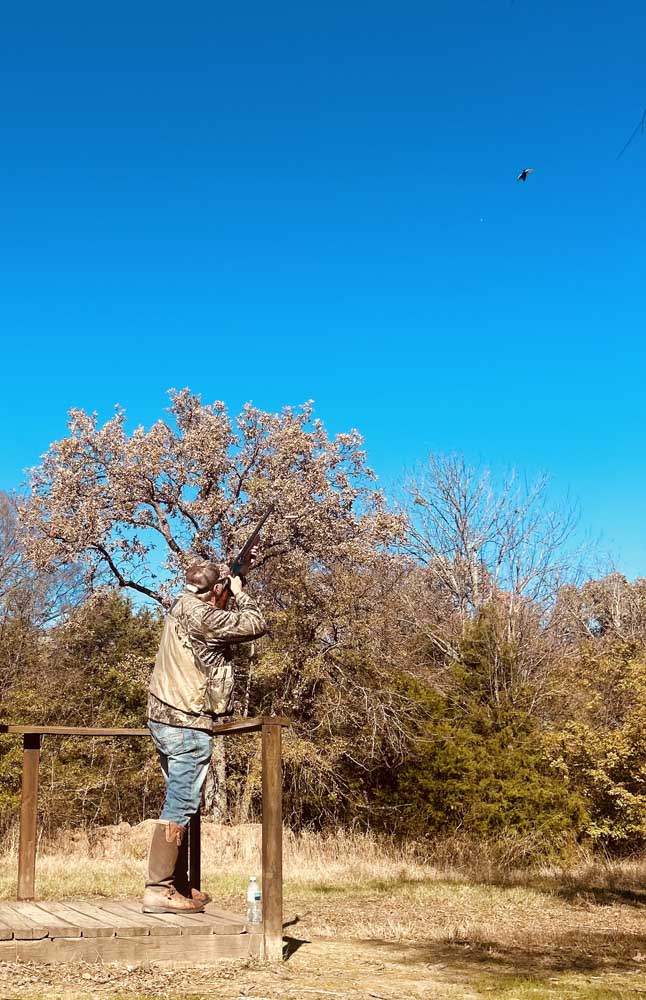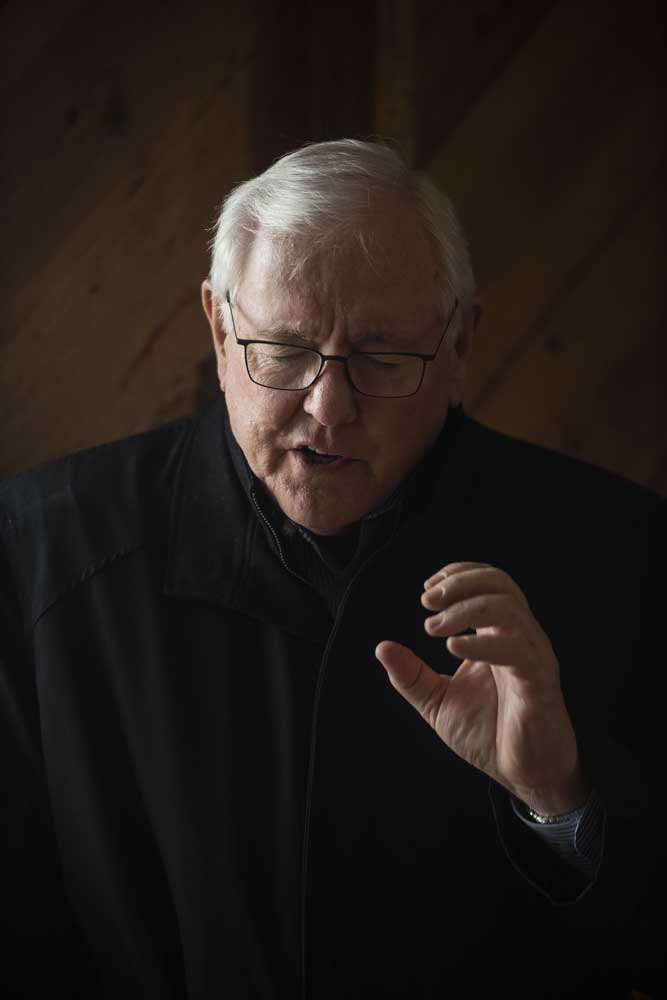Up And Away: Tower pheasant shoots offer a challenge for bird hunters
Published 11:00 pm Friday, December 13, 2024

- High-flying birds during a Hidden Lakes Hunting Resort tower pheasant shoot means hunters have to extend their lead to bring birds down. (Hidden Lakes/Courtesy)
YANTIS — “Here they come,” Cord Burnett shouted over the walkie-talkie to the 20 hunters and 10 dog handlers scattered around the tower stand at Hidden Lakes Hunting Resort.
Within seconds ring-necked pheasants were hand-launched from the 30-foot tower, and scattering in every direction.
“Coming to you, station seven, eight, three, four. Some of you guys must be shooting blanks. They are still flying,” Burnett chided the shooters who emptied their shotguns only to watch some of the birds fly away.
Tower shoots have become a popular attraction at Hidden Lakes, located just north of Lake Fork, attracting shooters from across the state for open shoots, as well as companies hosting staff and clients.
Unlike the field shoots where hunters walk behind pointers, two hunters in the tower shoots set up at one of 10 stations and shoot at passing birds launched from the tower. Depending on whether it is a 300-, 500- or a 1,000-bird shoot, the hunters move from station to station after 30, 50 or 100 birds are sent flying. The rotation gives the hunters a chance at every station in case one is doing better than another.
Once the birds are tossed into the air from atop the hidden tower nestled in a motte of trees in the middle of the field it is anyone’s guess where they might go. Trying to figure out the flight plan based on the wind is often futile as the birds have a mind of their own.
Some will coast down toward the hunters, others clear the trees and turn left or right. Others go straight up and hit the jet stream testing even the best of shooters.
With birds flying, hunters shooting and dogs running to make retrieves, the combined actions can best be described as organized chaos.
Hidden Lakes started holding tower shoots a year after opening its doors to hunters in 2008. Burnett and his father, Billy, built the tower by hand, and after holding a handful of shoots early, the popularity has grown.
“We have about 20 to 25 a year, but could do more. It has definitely gotten busier and busier,” Burnett said.
Ideally, it’s a 12-gauge game.
“For the most part, yes, but if they are experienced, they can shoot a 20-gauge with No. 6s,” Burnett said.
There are some, including women and youth, who do use 20s and a few with 28s, who depending on their skill level will do just as good as the best or as bad as the worst.
Some will have pump shotguns. Others will have semi-automatics, everything from old Remington model 1100s that are pulled out of the closet and dusted off, to the newest Benellis equipped with an extended tube to hold a total of eight shells. Then there are the ones with over/unders or side-by-sides, both effective when a single bird flies over, but a liability when Burnett and two others on the tower launch at a total of six at a time and they all go the same way.
An improved modified is the best choke option, but some use full chokes or in some cases some exotic options.
The ammo used is just as diverse. While Burnett recommends No. 5s or 6s, a lot of hunters seemingly clean out their closet for the shoots and come with everything from steel shot to field load No. 8s. There is the occasional hunter who shows up with 3- or 3 ½-inch shells, only to quickly regret it within a station or two because of the recoil. Hunters need a minimum of a box of shells per 100 birds.
Burnett said the biggest mistake he sees is hunters not getting a long enough lead.
“I think a lot underestimate what kind of lead they have to put on the birds. We release them at 30 feet, and they may climb to 100 feet in the air, so they are 40 yards above you if they don’t get any more height,” Burnett said.
Adding to that challenge is that a pheasant’s normal top speed is about 48 miles per hour, but with a backing wind they can fly up to 60 miles per hour, according to Pheasant’s Unlimited.
Burnett added a second problem is that hunters take shots that are too long either as they approach or as they pass closer to another station.
A shooter’s mettle is really tested if the hunters have participated in a side pool for tagged “money birds” released randomly during the day.
There is a dog handler working each station retrieving downed birds so the hunters can concentrate on shooting. The dog work is another component of the shoot because many of the hunters have never experienced hunting with dogs, and quickly become impressed with their work.
Dog handlers often belong to various retriever clubs, but others are individuals who use the shoots to work on their dogs in hunt-like conditions. Labs are the most common dogs used, but there will also be Boykin spaniels, cockers and others represented.
Although some first-time shooters come to the field skeptical about whether they will like the tower shoot format, before they are midway through the shoot they are converted.
“I haven’t had one person not enjoy the shoot,” Burnett said.
Hidden Lakes has three open shoots in January that are already booked. There are still openings in February shoots scheduled for the 1st, 8th and 15th. The shoots on the 1st and 15th are 500-bird shoots. The 8th is a 300-bird shoot.
Included in the cost of the shoot is a pre-hunt lunch and a portion of the day’s kill packaged and frozen. Really good hunts will see a 60 percent or better success rate.
For more information on an open shoot, or to schedule one for a company or organization, contact Burnett at 903-383-7100, or go online to www.hiddenlakeshr.com.







